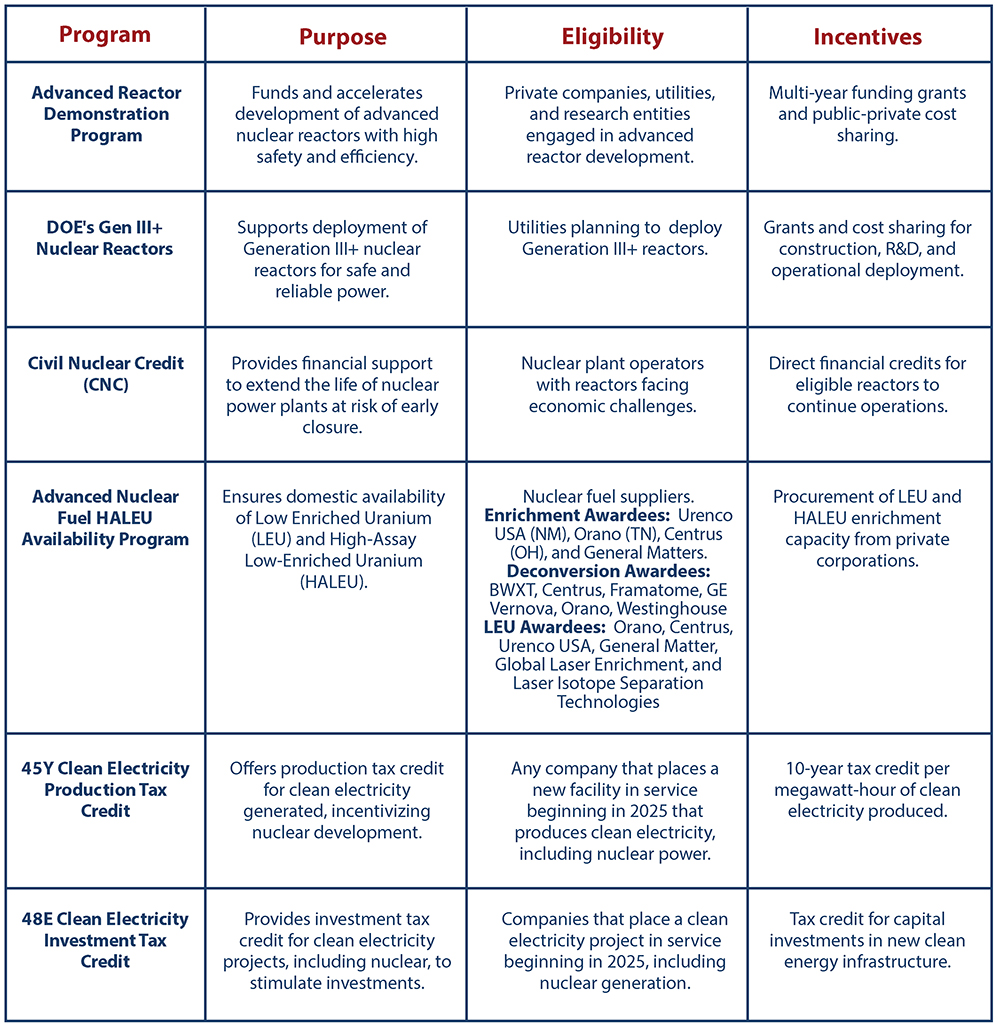New nuclear:
The United States is home to the largest nuclear energy sector in the world, which produces reliable, emissions-free power at over 50 sites across the country. While the U.S. fleet is one of the best-performing, nearly all American reactors were built decades ago. Today, innovative private companies are designing advanced nuclear technologies that build upon decades of nuclear energy leadership. Developing and deploying these new reactor technologies will support American industry and energy dominance.
New nuclear:
In May 2025, the Trump Administration released four Executive Orders directing federal agencies to take action to deploy new nuclear energy. These EOs correctly recognize new nuclear as a national security priority and set a bold vision to quadruple nuclear power capacity to 400 GW by 2050.





